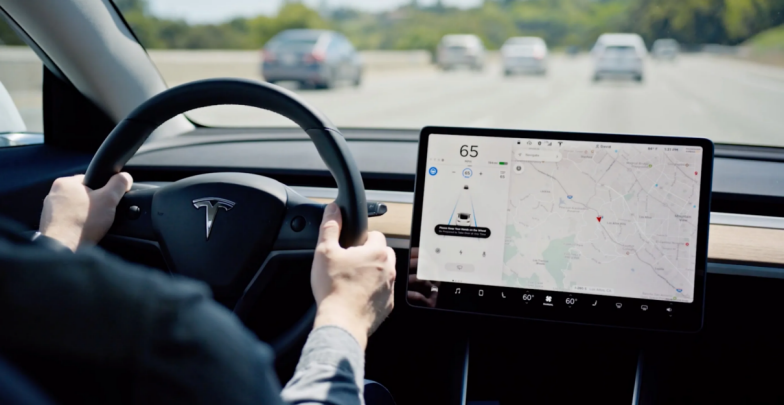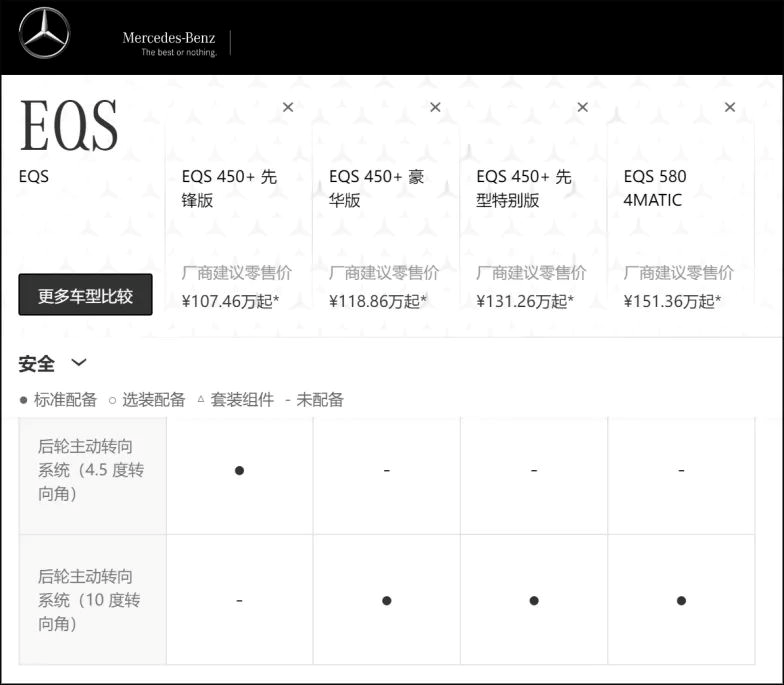Article Title
In September 2017, Hurricane Irma struck the southwestern coast of the United States and made landfall in Florida. Some Tesla owners in the area noticed a notification on their vehicles’ screens stating that battery capacity had been unlocked during the hurricane, allowing them temporary access to the full battery reserve, increasing range by about 40 miles to aid in their escape from danger.
The temporarily unlocked vehicles were all located in the affected areas of Florida, and the unlock period ended automatically on September 16th, after the hurricane was downgraded. Battery capacity and range were then restored to their original levels. Similar stories were repeated several times later, such as when Typhoon Mangkhut hit in 2018, and Tesla also temporarily unlocked the battery reserves of certain models in mainland China and Taiwan.
Tesla’s actions in these situations were widely praised for balancing humanitarian needs with the rights of high-end owners, while also demonstrating Tesla’s powerful over-the-air (OTA) capabilities.
The vehicles that were unlocked were all Model S/X 60/60D models, which are named “60” but are actually fitted with the same batteries as their 75D counterparts. A small percentage of the battery capacity is software-locked and unusable, which allows Tesla to temporarily unlock the battery reserves during emergencies. Owners can also choose to permanently unlock their battery reserves and increase their range to 75/75D specifications by paying $9,000, with possible adjustments in the future.
Until 2022, this is probably the most classic case of automotive industry hardware that is reserved for later payment.
Recently, Mercedes-Benz launched a subscription service for large-angle rear-wheel steering on the EQS, priced at 4,998 RMB per year. This is likely the first subscription-based hardware after-sale service in the country. Vehicle owners can purchase it within the Mercedes me store, as well as view other products such as in-car data packages. However, as it requires vehicle owner authentication, Mobike owners cannot currently view pricing or other details.Nearly at the same time, BMW launched a seat heating subscription service in multiple overseas markets, charging $18 per month with the option to subscribe for one or three years. What’s special and considerate is that BMW also offers a permanent purchase option for $415 without a subscription. This means, except for the OTA payment unlock method, it is no different from the regular optional configuration.
At almost the same time, the head of Volkswagen’s software department CARIAD told Bloomberg that VW will launch a subscription or on-demand payment model for automated driving assistance functions. “If you want, you can choose to activate automated driving in the next 50 miles.”
If you think it sounds familiar, you are right. This is essentially the same as Tesla’s Autopilot fully automated driving (FSD) payment model, which has been implemented for many years. In 2021, FSD launched a monthly payment subscription of $99-199, but the subscription has not yet been introduced into the Chinese market, where payment is still made in a one-time purchase.
A closer investigation would reveal that these patterns, while all breaking the conventional notion of “buying the car is owning the car,” need to be divided into two levels: one is pay-per-use after hardware installation and the ability to unlock remotely via OTA (rather than the 4S dealership); and two is subscribing or purchasing on an on-demand basis (rather than a one-time purchase) based on the first level.
A hardware function subscription model relies on the “full system hardware pre-installation” and the “flexible remote unlocking capability” as a basis to allow users to “use it whenever they want”. Otherwise, if each subscription requires a trip to the 4S dealership, it would be no different from the traditional leasing of hardware based on periodic installation and uninstallation.
Therefore, all of this must be based on one thing: a fully equipped hardware package across the entire system, even if the entry-level version does not have access to these functions.
Just like the Tesla 60D is actually the same as the 75D with a 75 kWh battery pack, the entry-level Mercedes EQS has the same hardware that supports 10 degrees of rear-wheel steering as the top-end model. If a BMW vehicle does not have seat heating but can be subscribed to, it must have been equipped with seat heating devices at the factory, as heat cannot be transmitted over the internet.Even seemingly “soft” features like autonomous driving systems are no exception. All Tesla models are equipped with the full set of hardware that supports FSD, with processors and camera configurations mostly supporting the latest generation of FSD features. Of course, Tesla’s own technology roadmap also makes it less reliant on the latest, highest specification sensor hardware.
Turning hardware configurations that were once only available for high-end models into those that are available across the board, inevitably leads to higher material costs (BOM). No matter how well a car maker promotes it, there will be some users who do not choose to upgrade for a fee, or do not subscribe to the feature during the entire usage cycle. Users have already been given the hardware, but they still don’t buy it. This is not a small probability event.
But things are not that simple.
First of all, it should be noted that for car makers, especially mature ones, BOM costs are not the entire cost. Especially compared to the price difference between high-end and low-end models, as well as the unit price of optional features, the material cost of adding corresponding hardware accounts for only a part of it, or even a small part.
Taking seats as an example, many DIY enthusiasts may know that the cost of purchasing heating, ventilation and other seat modification services in the aftermarket is only a fraction of the seat ventilation optional price offered by the car maker, which includes the disassembly and installation labor costs and profits of the modification merchant. Of course, this post-installation modification may be difficult to match the original factory, but the main reason is that it is limited by the installation, rather than the cost factor.
In other words, if the carmaker increased this type of hardware configuration, the cost required would still be far lower than the optional price, even if it was higher than the post-market modification.
Like BMW’s seat heating subscription model, if heating hardware is equipped for all models in the series and usage rights are provided in a post-payment mode, the cost of adding hardware required for each seat may be only tens of yuan when referring to market prices. Even if the cost budget is doubled for quality, it can still be easily recovered through subscription fees or buyout fees from some users. At least it is not more difficult than the traditional model.
This does not include the benefits brought about by unified hardware specifications and simplified production lines. The reason why Tesla is able to make all models hardware-ready for “FSD” is also due to this. Tesla uses a pure visual sensor scheme, and the cost of the required camera is not high, which further facilitates the pre-installed hardware and post-paid usage model.Why do car makers set such high prices for their configurations? Is it just because they are greedy and want to exploit their customers? Not exactly. The pricing strategy of car makers, which often results in configurations priced several times higher than their hardware costs, is aimed at reducing the profit margin of entry-level models and lowering the entry price, while attracting users to pay more premiums for high-end configurations.
This pricing model has been gradually formed by traditional car makers over decades, while challengers such as new car makers often use this to launch attacks. For example, NIO has managed to make previously high-end configurations, such as seat ventilation, affordable. Of course, this is another topic.
To Do or Not to Do

Another reason to support high-end hardware specifications regardless of the price of the car is that car makers actually have the opportunity to use hardware in stages and levels for many configurations. For example, Tesla’s autopilot-related hardware, which provides L2+ automatic driving assistance as standard, is also used to enable additional features such as FSD, which provides more comprehensive and advanced driving assistance for an extra fee.
Recently, Tesla has added an enhanced version of automatic driving assistance function priced at half of FSD and with reduced features, between the two. This is a good example of using standard hardware to create multiple levels of products and expand revenue streams as much as possible.
The standardization of hardware specifications also allows car makers to provide some non-core functions using these hardware. For example, Tesla’s cameras, which are originally designed for autonomous driving, have derived other functions such as sentinel mode for the entire lineup.
As an extension of this feature, car makers can also easily create various trial methods to create multiple opportunities for users to pay after the fact. Tesla occasionally offers a limited-time experience of enhanced Autopilot (requires optional fee) for all vehicles. One day, I suddenly found that I could turn on the turn signal and change lanes… (but still didn’t pay for it :-p)

The handling of EQS by Mercedes-Benz is actually similar. Mercedes’ subscription model has some exploratory characteristics. EQS has launched 3-4 configurations or price versions in China, and only the entry-level EQS 450+ Pioneer Edition does not come with (to be precise, not open) the 10-degree rear-wheel steering. Therefore, only this entry-level version is eligible for the 10-degree rear-wheel steering subscription at RMB 4,998 per year.Meanwhile, it should also be pointed out that not all hardware is suitable for such a play. An inverse typical example of insufficient full-series standard hardware is the 60D equipped with 75D batteries, and then locked the batteries. Unlike seat heating units and visual cameras, the material cost of a 15 kWh lithium battery is much higher. If the standard large battery is not chosen by some users, and the auto manufacturers suffer losses, risks are higher.
Compared with equally expensive configurations such as seat heating, Mercedes EQS’s rear-wheel steering system, but lithium batteries cannot provide functional layering like the rear-wheel steering system. The missing 15 kWh is not available for use, and it even increases the weight compared to the normal 60 kWh battery.
“Installed but not used” will inevitably cause some idle resources. For scarce resources such as lithium batteries, this may attract stronger criticism. The lock battery version 60D with a 75 kWh battery has not existed for a long time, but if Tesla continues this practice today, it may attract public criticism due to the “moral pressure to force consumers to pay for waste resources.”
Especially in the present situation of scarce raw materials and energy crisis, deliberately installing a part of the battery on the car but requiring users to pay extra to use it, otherwise, a part of the battery is equivalent to being produced in vain. This behavior is likely to be criticized.
If the material cost of a particular configuration and the potential benefit do not reach an attractive ratio, then post-payment is not a tempting model for auto manufacturers. If it is related to scarce resources in the social morality aspect, then the automaker does have a responsibility to avoid such completely foreseeable waste.
Subscription model, who is the honey?
If it is only pre-installed and post-paid, it does not make much difference to us consumers. The cost pressure of the configuration that allows auto manufacturers to adopt this model is not directly transferred to non-paying consumers, or it is negligible. Consumers just need to get used to it.With the emergence of subscription models, many people are reminded of the fear of being dominated by subscription-based mobile apps. In the early days of the mobile app market, the one-time purchase model was absolutely mainstream, and few people would have thought that an app could only be used by constantly paying for it. And a few years ago, the subscription model that could sustain developers’ revenue generation gradually replaced the one-time purchase model.
Not to mention later on, some video apps have even introduced exorbitant pricing behavior of “VIP in VIP”, which inevitably raises concerns: will we have to pay again for 12 degrees of freedom steering after already paying for 10 degrees of freedom in the future?
As a high-cost consumer product, cars themselves have (or should have) low-frequency features, which are contrary to the subscription model. With proper maintenance, the lifespan of a car can reach more than ten years, and the total price for annual subscriptions of relatively core features may not be cost-effective.
On the other hand, there are also some features that are not necessary for everyone. As long as the subscription cycle is set reasonably, consumers are more likely to achieve win-win cooperation with automakers. For example, seat ventilation and heating, consumers in southern China may not need heating throughout the year, while consumers in northern China need heating more and the usage cycle is also very regular. The monthly payment plan of BMW is a more suitable choice than today’s standard heating.
For example, automatic driving assistance, for many car owners who commute short distances in congested urban areas all year round, today’s L2 assistance is almost useless; whereas for car owners who frequently travel long distances, such assistance systems have greater value. Subscription models can allow them to achieve their respective best. At the same time, short subscription cycles like 50 miles can allow car owners to pay only when needed, although the time price ratio may not be cost-effective, the total expenditure is reduced.
Small bottles of cola are more expensive, but it will be more cost-effective for people who only occasionally need to quench their thirst. The same goes for this.
Whether it is post-payment or subscription-based post-payment, providing the option to purchase in one-time payment may still be mainstream, especially for core features. Otherwise, uninterrupted subscription payments will be regarded by consumers as “not having this feature” and reduce the weight when making a purchase.
For non-core features, automakers need to provide a suitable subscription cycle design, and strive to achieve a win-win situation between consumers and automakers: more consumers pay for the products and services they need, and automakers obtain more revenue with a larger total quantity.
Just like video platforms today have to make rules clear under regulatory pressure, the subscription model for cars is actually nothing special, and we do not need to be overly worried. Only when the market competition is sufficient, when some manufacturers attempt to squeeze consumers through subscription models, non-subscription or more scientific and reasonable subscription models will become powerful weapons challenging enterprises.The most important difference is that mobile app service providers usually do not have other sources of profit. The software download itself is free, and some small and functional apps cannot rely on advertising revenue. Therefore, when mobile Internet has been popularized and there are no longer large numbers of new user groups, the entire industry needs to continuously make a profit. Thus, the subscription-based model has become the mainstream instead of the buyout model that was previously popular.
Cars, however, are different. The revenue from selling the cars is enough to support the automakers. Consumers cannot buy a car for free — the idea of offering free hardware is long gone. The subscription-based model only changes the mode of additional income. Automakers do not need to risk consumer condemnation or competition from their peers to forcefully promote those unreasonable subscriptions that are essentially forcing people to pay extra money. The necessity and risk of doing so would not be worth the effort.
This article is a translation by ChatGPT of a Chinese report from 42HOW. If you have any questions about it, please email bd@42how.com.
